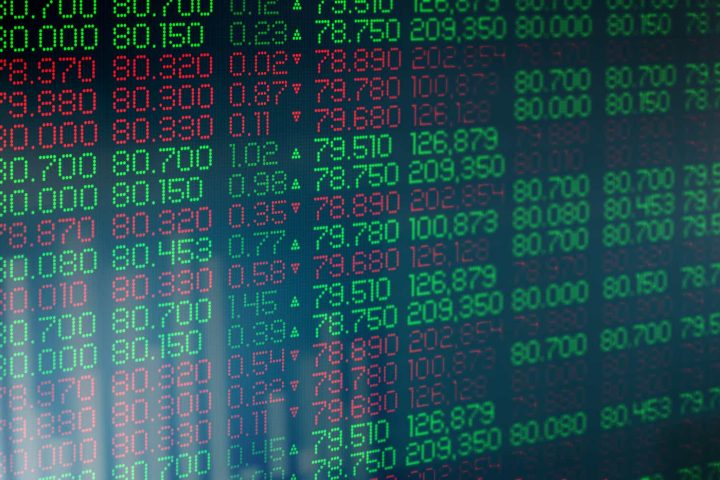The artificial intelligence trade is not just for traditional tech companies. We have three industrial stocks in the portfolio that will keep getting more and more business as AI proliferates and data centers are built and rebuilt to handle the increasing computing workloads. Beyond AI, there are other fundamental reasons to buy them as well. However, what price levels should you pay? Like Thursday’s look at buy levels for our four 1-rated megacaps — Amazon , Meta Platforms , Microsoft , and Nvidia — we like the business prospects of those industrial names and think their stocks will move higher over time. But few stocks ever go straight up. Methodology We are conducting this technical analysis from the perspective of a new money investor looking to initiate a position or someone with an existing position sitting in the loss column where another buy could help lower their cost basis. For those with existing positions, this exercise can help dictate when might be a good time to consider breaking basis, should you feel the need to get a bit more exposure. That, however, violates our discipline and should not be done lightly. Our analysis can also inform members when these stocks are trading at so-called “battleground levels,” which may prompt you to adjust your exposure accordingly. Fundamentally, we like DuPont for its ties to semiconductor manufacturing and its upcoming split into three companies; we like Dover as a key ecosystem partner of Club chip giant Nvidia and other high-growth businesses including biopharmaceutical components; and we like Eaton for its electric management systems used to power data centers and exposure to megatrends such as electrification and infrastructure spending. Here’s a look at key technicals in their stock charts that signal attractive buy levels. DuPont buy levels: $80, $78, and $76 We’re going to zoom out a bit on these charts and look at two-year performance, given shares have just recently broken out above a resistance level that the stock has had to contend with since early 2023. The Polarity Principal in technical analysis states that past resistance, once broken, becomes support, and vice versa. So, we can gain valuable information by considering long-standing points of resistance that have recently been overcome. By now, members likely know that the two levels we are always going to watch are the 50-day moving average and the 200-day. We are above both of those levels. So, we’re going to look for them to be support on a pullback. That puts a first buy level at just over $80 apiece , right at the 50-day moving average and around current levels. From there, we come to roughly $78 , where we see shares were rejected (meaning sold) several times since early 2023. Shares finally broke above that level in early May and have since managed to hold that level. While once resistance, since May, when the breakout occurred on the back of the company’s first quarter earnings release, it has proven to be an area of support. Around this level is also where shares would be valued at the stock’s five-year historical valuation of about 17.6 times, using 2025 earnings estimates of $4.39 per share as the benchmark. Should that level fail, we would then look to the 200-day, just under $76 apiece . Dover buy levels: $170, $160, $150, $140 We’re below the 50-day here, so, we can’t look to that as support, rather, it now serves as a key resistance level to the upside that we must overcome. Instead, a first buy point (aside from here and now as again, we do maintain a 1 rating based on the business fundamentals — and did mostly recently pick up some more shares on Thursday — would be the 200-day moving average, around $170 . The $170 level has also proven to be support in the recent past, so we have both of those factors working to support the stock there. The third factor playing to our advantage at this level is that at $171 apiece, shares would be trading at the five-year average valuation of 17.6 times based on 2025 earnings estimates of $9.72. Below $170, and we would probably wait to see the $160 level , which as we can see was previously resistance until early February of this year. Once it was taken out, however, shares moved very quickly to a new level over $170, where we’ve been consolidating ever since in a $20-per-share range between $170 and $190. That said, a move below $170 would represent a breakdown below the 200-day moving average. So, while we don’t currently see a fundamental reason for a move below that level, be mindful that the chart would be a tough spot and those taking their cues from the technical analysis will be looking at the aforementioned $160, and then $150 and $140 , areas where we see prior support and resistance. Again, we don’t see a fundamental reason for shares to trade that low but it’s good to note these things because crazy things happen and if some headline crosses that sparks a massive sell-off, shareholders are likely to sell first and ask questions later. We would want to take advantage of those knee-jerk reactions and give ourselves the best odds of doing so are by examining these levels ahead of time, when things are calm. Eaton buy levels: $266, $250, $240 This is a tough chart given that shares are below both the 50-day and the 200-day moving averages. That makes both key points of resistance that must be overcome. While we maintain a 1 rating based on fundamentals, that information is extremely useful because it tells us that wider scales should be considered given the technical setup, regardless of how we feel about the fundamentals. In other words, fundamentals dictate buying, but the technical setup dictates that we must do so slowly, with a bit of increased caution. With that in mind, despite the breakdown below these key moving averages, we do see a still intact uptrend (the purple line). That uptrend ends at about $266 , about 6% below current levels. But keep in mind that line will extend out further and continue moving higher. So, at the moment, we would be looking for support to come in at about $266. However, as time passes, look for support at slightly higher levels each day. An uptrend is formed by connecting higher lows over time. In this case, it’s an uptrend going back to late September 2022, so it’s pretty long-lasting and significant. At $260, we get to the five-year average valuation of 21.5 times on 2025 earnings estimates. That said, we’ve been comfortable with owning it above that level because we think generative AI and the resulting need to update data centers, along with the convergence of several megatrends including electrification, energy transition, digitalization, infrastructure spending, and reindustrialization, means that shares deserve to trade at a higher valuation than what we’ve seen historically. So, we would argue that to value shares at the five-year average valuation would be to undervalue them considering the path ahead versus what we’ve seen in the past. You could buy here based on valuation. But as we noted, we want to implement wider scales on a chart like this. So, if you picked some up at $266 there is no need to step in just yet at $260. Given how long that uptrend has been in play, it would make sense that should it fail to support the stock we could be looking at pretty decent decline after that. We saw a breakout at $250 and prior resistance at $238 that was overcome earlier this year. So, we would look for support around both $250 and below $240 should shares break down. Again though, that would be a sizeable decline — so before stepping in, we would do our homework to ensure nothing has changed fundamentally. (Jim Cramer’s Charitable Trust is long DD, DOV, ETN, AMZN, META, MSFT, NVDA. See here for a full list of the stocks.) As a subscriber to the CNBC Investing Club with Jim Cramer, you will receive a trade alert before Jim makes a trade. Jim waits 45 minutes after sending a trade alert before buying or selling a stock in his charitable trust’s portfolio. If Jim has talked about a stock on CNBC TV, he waits 72 hours after issuing the trade alert before executing the trade. THE ABOVE INVESTING CLUB INFORMATION IS SUBJECT TO OUR TERMS AND CONDITIONS AND PRIVACY POLICY , TOGETHER WITH OUR DISCLAIMER . NO FIDUCIARY OBLIGATION OR DUTY EXISTS, OR IS CREATED, BY VIRTUE OF YOUR RECEIPT OF ANY INFORMATION PROVIDED IN CONNECTION WITH THE INVESTING CLUB. NO SPECIFIC OUTCOME OR PROFIT IS GUARANTEED.
The artificial intelligence trade is not just for traditional tech companies.
We have three industrial stocks in the portfolio that will keep getting more and more business as AI proliferates and data centers are built and rebuilt to handle the increasing computing workloads. Beyond AI, there are other fundamental reasons to buy them as well.
However, what price levels should you pay?
Read the full article here







